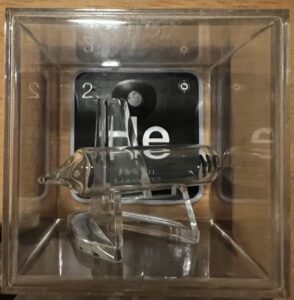Helium
Atomic Number: 2
Atomic Mass: 4.002602 u

Helium, with the chemical symbol He, is the second lightest and the second most abundant element in the observable universe, primarily found in stars and gas giant planets. It is a noble gas, located in Group 18 of the periodic table, and is distinguished by its complete electron shell, which makes it extremely stable and almost completely nonreactive under normal conditions. Helium is colorless, odorless, tasteless, non-toxic, and inert, and it has the lowest boiling and melting points of all the elements, remaining a liquid at temperatures near absolute zero.
Helium was first discovered in the solar spectrum during a solar eclipse in 1868 by Joseph Norman Lockyer, along with Pierre Janssen and later found on Earth in 1895. One of its most familiar uses is in filling balloons and airships, as it is safer than hydrogen due to its non-flammable nature. In scientific and technological applications, helium’s low boiling point makes it a valuable coolant for superconducting magnets (such as those used in MRI machines) and in cryogenics. Its inertness also makes it ideal as a protective gas in processes like arc welding, where it shields materials from the air to prevent oxidation.
In addition to these applications, helium, particularly its isotope helium-3, is of interest in nuclear fusion research. Although helium is abundant in the cosmos, it is relatively rare on Earth and is primarily obtained through the extraction from natural gas reserves. The unique properties of helium, from its inertness to its extreme lightness and low boiling point, make it an indispensable element in various fields ranging from medical technology to aerospace and fundamental scientific research.
Helium Uses
A noble gas with unique properties, has a wide array of applications across various fields. Its most recognized use is in inflating balloons, from small party balloons to large airships and blimps. Unlike hydrogen, helium is non-flammable and safe for such applications. In the field of science, helium’s extremely low boiling point makes it an invaluable coolant, particularly in cryogenics. It is essential for cooling superconducting magnets, such as those used in Magnetic Resonance Imaging (MRI) machines and particle accelerators.
Additionally, it is used as a shielding gas in arc welding, where it protects materials from the atmosphere to prevent oxidation and contamination during the welding process. Its inertness also makes it useful in creating controlled, non-reactive environments, such as in gas chromatography or in the manufacturing of semiconductor and fiber optic materials.
Another significant application is in deep-sea diving, where it is mixed with oxygen to create breathing gas mixtures like trimix and heliox. These mixtures help prevent nitrogen narcosis and oxygen toxicity, issues associated with traditional breathing gases under high pressure.
Helium’s low density also has applications in leak detection. Since it diffuses through solids three times faster than air, it’s used to detect leaks in high-vacuum equipment and high-pressure containers. In scientific research, particularly in low-temperature physics, it is invaluable. Its isotope, helium-3, is also of interest in nuclear fusion research.
Despite its abundance in the universe, helium is relatively rare on Earth, leading to concerns about its conservation and sustainable use. Its diverse applications, ranging from safety-critical roles in medical technology to recreational uses, underline its versatility and importance in modern society.
For Kids
- Super Light: Helium is the second lightest element in the universe. It’s so light that if you fill a balloon with it, the balloon floats up into the sky!
- Not Just for Balloons: While we often use helium to fill balloons, it’s actually used in a lot of important ways. For example, doctors use it in MRI machines, which are big scanners that help see inside your body.
- Doesn’t React: Helium is very special because it doesn’t like to react with other elements. Scientists call it an “inert” or “noble” gas because it’s like a noble king or queen that doesn’t mingle with the commoners.
- From the Sun: Helium was first discovered not on Earth, but on the Sun! A scientist noticed a special yellow light in the sun’s rays during an eclipse and realized it was a new element, which he named helium after Helios, the Greek god of the Sun.
- Funny Voices: Have you ever inhaled a bit of helium from a balloon and talked? It makes your voice sound really high-pitched and funny! That’s because helium is lighter than air, so sound travels through it faster.
- Outer Space Is Full of It: While helium is quite rare on Earth, it’s very common in the universe. Most of the helium in the universe was made in the first few minutes after the Big Bang!
- Super Cool: Helium can be cooled down to a super low temperature, colder than anywhere naturally on Earth. When it gets this cold, it turns into a liquid and can do some really cool things, like flow uphill!
- Not Just Any Gas: Helium is one of the few gases that can’t be frozen into a solid under normal atmospheric pressure, no matter how cold it gets.
- Deep-Sea Diving: Helium is also used in deep-sea diving. Divers breathe a mix of helium and oxygen to go very deep underwater without getting dizzy or sick from the pressure.
- A Cosmic Mystery: Scientists are curious about where all the helium goes when it floats up into the sky. It’s one of the mysteries they’re trying to solve about our planet!
Remember, even though it’s fun to make your voice squeaky with helium, it’s important to be careful and always have an adult around because breathing too much helium can be dangerous.
 using WordPress and
using WordPress and
No responses yet